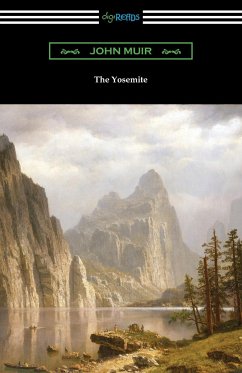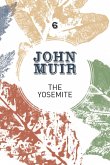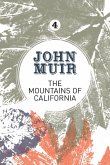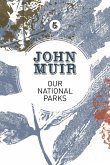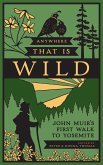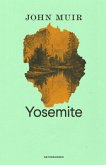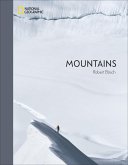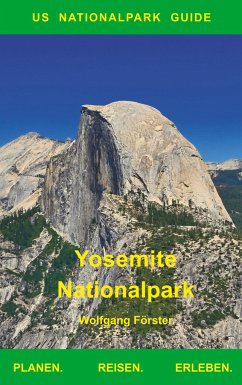John Muir, famous for his naturalist essays and books, was over 70 years old when he wrote "The Yosemite" as a reflection on the beauty of the national park. Muir was a naturalist, so he was highly invested in describing the landscape, flora, and fauna of Yosemite National Park. He even said that "no temple with manmade hands can compare with Yosemite." Muir knew the terrain well, having hiked and climbed Cathedral Peak, Mount Dana, and the old Indian trail that lead to Mono Lake. The naturalist also built a small log cabin along Yosemite Creek and lived there for two years, enjoying the quiet natural life. "The Yosemite" describes Muir's interactions with the people he met over the years in Yosemite along with his adventures, like riding an avalanche. John Muir is best known as one of the first nature writers in America. Besides wanting people to know the natural beauty of their country, he wanted to instill a deep sense of conservation and protection for the untouched lands. Muir helped co-found the now-famous Sierra Club, which had a hand in making Yosemite a national park. Muir was the first president of the organization and remained in the position until his death in 1914. This edition is printed on premium acid-free paper.
Hinweis: Dieser Artikel kann nur an eine deutsche Lieferadresse ausgeliefert werden.
Hinweis: Dieser Artikel kann nur an eine deutsche Lieferadresse ausgeliefert werden.

Für die Tasche Wie der Yellowstone-Nationalpark zählt auch das Yosemite Valley in Kalifornien zu den mystisch verehrten Landschaften der USA. Dazu haben viele Menschen beigetragen, auch der Fotograf Ansel Adams, der diese Schönheit der Welt zeigte. Jene Schönheit, die der Umweltaktivist John Muir so beschrieb: Im Merced River "spiegeln sich Maiglöckchen und Bäume und die alles überschauenden Felsen. Zarte und flüchtige Dinge treffen hier auf die Ewigkeit und vermischen sich in unzähligen Formen, und es hat den Eindruck, als hätte Mutter Natur in diesem Bergpalast ihre ausgesuchtesten Schätze versammelt, um ihre Liebhaber zu beeindrucken und in ihren Bann zu ziehen." Yosemite war 1864 eines der ersten Schutzgebiete, noch vor der Gründung des Yellowstone-Nationalparks. Geschützt werden sollte die landschaftliche Schönheit und der touristische Wert. 1903 besuchte Präsident Roosevelt gemeinsam mit John das Gebiet.
1912 schrieb John Muir sein Buch "Yosemite", das nun bei Matthes & Seitz auf Deutsch neu erschienen ist. Es ist eine Lobpreisung des Naturparadieses und eine akkurate Beschreibung der Pflanzen- und Tierarten, der gigantischen Felsen und der Riesenmammutbäume. Es erscheint in der Reihe "Naturkunden" und ist wunderschön aufgemacht. Feines Papier, schöner Druck, ansprechendes Cover. Aber damit wollte man es wohl nicht bewenden lassen und hat einen Coup gelandet: Das Vorwort stammt von Mordecai Ogada. Und das ist ein Problem. Der kenianische Ökologe und Essayist schreibt seit Jahren furios und unversöhnlich gegen den Naturschutzgedanken an. Er sieht darin eine Fortsetzung des Kolonialismus mit anderen Mitteln. Natürlich hat Ogada oft recht. Etwa wenn er schreibt, die Sichtweise europäischer Kolonisten in aller Welt bestimmte, "welcher Teil der Biodiversität getötet und welcher gerettet werden sollte". Die Wünsche der Weißen beeinflussten, "was in der Natur als zu eliminierendes Ungeziefer gilt, was aus Prestigegründen als Trophäe gejagt werden soll und was wertvoll genug ist, um durch den Einsatz von Gewalt geschützt zu werden". All das gilt vor allem für den afrikanischen Kontinent. Dort - aber auch in den USA und im Yosemite - wurden "die Gebiete von Indigenen, die sie einst nutzten, ,gesäubert'".
Doch ein Problem vernachlässigt Oagada: Überall, wo Naturschutz ausgerufen wird, stößt das auf Proteste. Keine Frage, dass man diese heute ernst nehmen muss und Menschen nicht mehr barsch umgesiedelt werden können, um Tiere zu retten. Aber auch in Europa kommt es bei der Ausrufung von Schutzgebieten zu Schwierigkeiten. Als der Nationalpark Berchtesgaden installiert wurde, liefen die Einheimischen Sturm, da sie nun nicht mehr auf den Wegen zum Pilzesammeln gehen konnten, die schon der Großvater ging. Und in der Schweiz gibt es bis heute nur einen einzigen Nationalpark, weil alle anderen Projekte - zuletzt zwei Vorhaben im Tessin - von Anwohnern torpediert wurden. Im Prinzip finden die meisten Menschen Naturschutz gut, aber meist nach dem Nimby-Prinzip. Nationalpark ja, aber "not in my backyard", also nicht bei mir vor dem Haus. Würde man also überall auf die direkten Nachbarn hören - es gäbe nirgends geschützte Gebiete.
Das größte Problem allerdings ist die Konfrontation von Vorwort und Originaltext. Geradeso, als würde Friedrich Merz einleitend zu einer Neuausgabe von Marx' "Das Kapital" schreiben. Ogadas kritischer Text ist für sich genommen lesenswert und regt zum Nachdenken an. Aber warum hat man nicht seinen Essay mit anderen kontroversen Auseinandersetzungen in einen eigenen Band gepackt? So verspürt man nach der Lektüre von Mordecai Ogada keinerlei Lust mehr, John Muirs Buch zu lesen. Und das ist schade. Man verpasst Sätze wie diese: "Die Gipfel der Range sind dann mit glänzenden Fahnen aus wehendem Schnee geschmückt, deren leuchtender Strom manchmal mehr als eine Meile lang ist und die uns mit feierlichem Überschwang zuwinken, als feierten sie ein alle Erwartungen übertreffendes Fest." bfer.
John Muir: "Yosemite". Mit einem Vorwort von Mordecai Ogada. Aus dem Englischen von Jens Lindenlaub und Max Henninger. Matthes & Seitz, Berlin 2021. 200 Seiten, 25 Euro
Alle Rechte vorbehalten. © F.A.Z. GmbH, Frankfurt am Main

